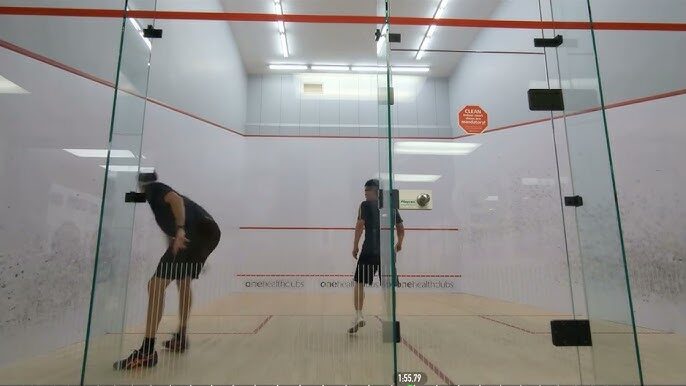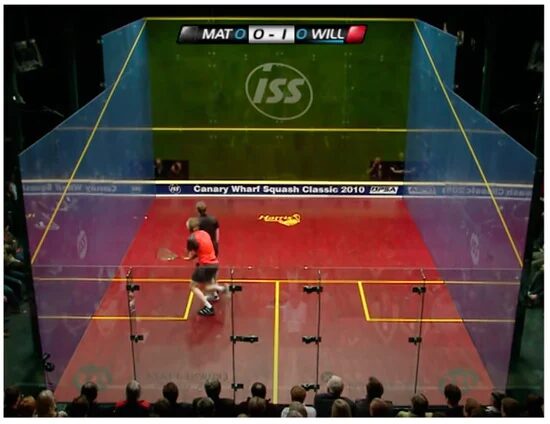Squash is an exciting and fast-paced sport that has captured the attention of players and spectators worldwide. Whether you’re a beginner trying to understand the basics or an advanced player aiming to refine your knowledge, one of the essential aspects of the game is the scoring system. Understanding how points are scored can significantly enhance your gameplay and spectator experience. In this article, we’ll break down the squash scoring system and explain the differences between traditional and modern formats, helping you master the rules of the game.
1. What is Squash?
Squash is an indoor racquet sport played by two players (singles) or four players (doubles) who take turns hitting a small rubber ball against the front wall using a racquet. The objective is to make the ball bounce twice on the opponent’s side before they can return it. The game requires agility, strategy, and endurance. To enjoy the game fully, understanding how scoring works is essential.
2. Understanding Squash Scoring Systems
The squash scoring system is a critical element in determining who wins the match. Over the years, the game has evolved, and different scoring systems have been introduced to make the game faster and more exciting. In squash, points are scored based on the rally, with different rules applied depending on the scoring system in use.
3. Traditional Scoring System (Hand-In-Hand-Out)
The traditional scoring system, also known as hand-in-hand-out, is the classic format used in squash for many years. Here’s how it works:
- Only the server can score points: In this system, only the player who serves has the opportunity to score a point. If the receiver wins the rally, they gain the serve, but no point is awarded unless the server wins the rally.
- Game format: A match is played in games of 11 or 15 points, and a player must win by at least two points.
- Pros and cons:
- Pros: The traditional system was easier for casual players to understand.
- Cons: Games could drag on if players were closely matched, and it sometimes led to less dynamic matches.
4. The Current Scoring System: Rally Scoring
In modern squash, the rally scoring system is now the standard. Under rally scoring, every rally counts—meaning either player can win a point regardless of who serves. Here’s what makes rally scoring different:
- Every rally counts: Unlike traditional scoring, in rally scoring, players can score points whether they’re serving or receiving. The momentum of the rally directly influences the score, making the game faster and more exciting.
- Match format: Most professional matches are played in games of 11 points (or sometimes 15 points), and players must win by two points. This format often leads to shorter, more action-packed games.
- Why rally scoring is more popular: The shift to rally scoring was made to speed up the game, making it more television-friendly and spectator-oriented. It also ensures that every rally is meaningful, preventing long stretches where the score remains static.
5. Comparison: Traditional vs. Rally Scoring
Both traditional and rally scoring systems have their merits, but rally scoring is now more widely used. Here’s a comparison of both systems:
- Traditional Scoring:
- Only the server can score points.
- Matches could go longer, with points being harder to win.
- Rally Scoring:
- Both players can score points, regardless of who serves.
- Faster, more dynamic gameplay, making it more appealing for viewers.
While traditional scoring was simpler, rally scoring is now the preferred method because of its quicker pace and greater excitement.
6. Points and Game Format
In squash, points are awarded based on the rally outcome. Here’s a breakdown of common game formats:
- 11-Point Game: A match consists of multiple games, and each game is played up to 11 points. A player must win by at least two points.
- 15-Point Game: Some tournaments still use this format, though it’s becoming less common.
Games are typically played in a best-of-three or best-of-five format, where the first player to win the required number of games wins the match.
7. Commonly Used Scoring Formats in Squash Tournaments
In professional squash tournaments, there are various scoring formats in use. The most common formats include:
- Best of 3 or 5 Games: Matches are often played in a best-of-three or best-of-five game format, where the first player to win the required number of games wins the match.
- PSA Tour and Major Tournaments: Many professional squash matches use the 11-point rally scoring system, making matches more exciting and faster.
- Special Rules: Some tournaments include sudden-death rules if the game is tied, ensuring a thrilling conclusion.
8. Key Squash Scoring Terms You Should Know
When learning the squash scoring system, it’s important to understand key squash scoring terms. Here are some common ones:
- Match vs. Game: A match consists of several games, usually 3 or 5. Each game is played to a set number of points.
- Side-Out: When the player who served loses the rally, and the serve passes to the opponent.
- Let: A rally is stopped, and the server must replay the point (common if the ball is in the way or there’s interference).
- Tiebreaker: If the score reaches 10-10 in a game, the player must win by two clear points (or sometimes a special tiebreaker is used).
9. Tips for Winning Points in Squash
Mastering the scoring system is just one part of the game—knowing how to win points is crucial! Here are some tips:
- Serve strategically: Use your serve to set the tone of the rally. A well-placed serve can put pressure on your opponent.
- Control the T: The T is the central area of the court. Dominating this area allows you to control the rally and increase your chances of winning points.
- Mix it up: Keep your opponent guessing by varying your shots—use drop shots, lobs, and hard drives to break their rhythm.
Conclusion
Understanding the squash scoring system is essential for players and fans alike. Whether you’re playing with friends or watching a professional match, knowing how points are scored adds to the enjoyment and appreciation of the game. From the traditional hand-in-hand-out system to the modern rally scoring format, squash has evolved to become a faster and more exciting sport.
By learning the ins and outs of the scoring system, you’ll be better equipped to enjoy every rally, whether you’re a player on the court or a fan in the stands.
Are you ready to take your squash game to the next level? Check out our other squash-related content to improve your skills and knowledge. Don’t forget to share this article with your friends and fellow squash enthusiasts—let’s keep growing the sport together!




